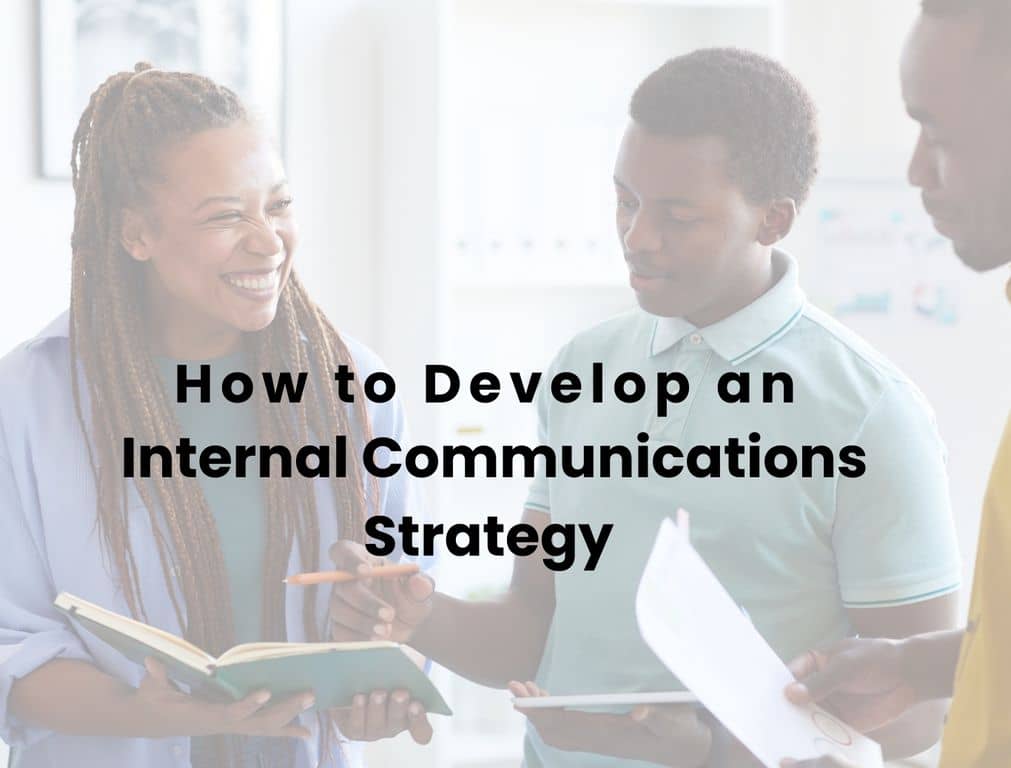How to Develop an Internal Communications Strategy

An internal communications strategy is derived from the overall business plan or organizational agenda to serve the internal stakeholders of the business/ organization. Internal communications is an expertise area under corporate communications that focuses on strategic communications within an organization. The result or objective of internal communications is to increase employee engagement, workplace productivity and organizational effectiveness. This practice area is concerned with employee communications, reputation/risk management and change management.
Sola Abulu, our Principal Consultant defines internal communications as “ a proactive process of engaging with employees and other internal stakeholders to enable the achievement of your desired outcomes from a productivity or profitability and impact perspective. ”
To achieve the desired objective of internal communications, there must be intentionality and purposefulness in developing the strategy. This article will help corporate communications professionals in thinking through the strategy development and planning process. This article highlights the importance of communications in achieving organizational effectiveness.
What to consider in an internal communications strategy.
- Name of activity
This could be a business process, a campaign or any activity that is borne out of a program for the organization.
- How does this activity or event align with the business context and strategic goals?
In this stage, you define how this activity contributes to the overall business context. Some of the questions to answer are; why is this crucial for the business or organization at this time? What is the bigger picture that makes this activity a must-have? This would reveal the urgency and need for the activity as it affects organizational goals and business objectives.
- What internal stakeholder groups are involved?
It is important to note that employees are valuable stakeholders of an organization and in this case, they are a part of your internal stakeholders amongst others in the value chain. At this stage in the strategy development, you determine which stakeholder group is required for the internal communications campaign.
- What is the interest of each stakeholder group involved?
Consider this to be your stakeholder mapping. Here, you prioritize the stakeholder group already identified in step 3 above based on how high or low their power/influence and interest is in the organization.
- What result do you want to achieve?
This is where you consider what you need the stakeholders to know and do through this activity. It could be an awareness creation, behavioural change or their role in reputation management. It is a costly assumption to think that the stakeholders know what you want them to do with the activity this is why stipulating it in the strategy development process is important so as to aid your messaging and other processes.
- How do you want the stakeholders to feel?
This is where you determine your tone of messaging, content type and language. Basically, this is where the decision on how to engage and what to say to the stakeholder groups is made.
- What is the desired outcome?
This stage precedes the last stage. It defines what success looks like for this activity and what would be a desirable culture established within the internal stakeholders of the business or organization.
- What are the key performance indicators?
Here, you note the key performance indicators or metrics to use in measuring the success of your internal communications event/campaign. This result will reveal the achievements, progress and in some cases, the gaps that are yet to be closed with the communications activity.
You will find our communications strategy template useful. Download here.
To conclude, one key point to note in developing an internal communications strategy is realizing that the communications activity or campaign is not loosely created but must (as a matter of necessity), follow the framework of strategic communications. That is, it has to be purposeful, intentional and aligning with the overall business or organizational objectives.
Did you know that at Sola Abulu and Associates, we offer a specialized pre-recorded training available 24/7 to improve your competence and skills in Strategic Communications. Register here.
……………………….
Sola Abulu & Associates is a strategy and communications consulting and training firm committed to enabling businesses, brands and organizations to achieve their objectives through strategic communications, organizational effectiveness and reputation risk management
Chat with us for more information on our courses.
